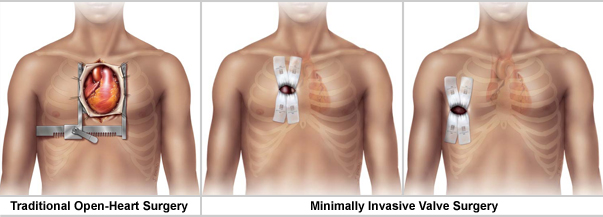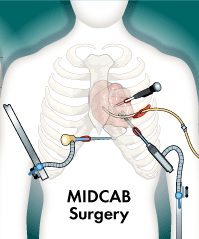|
|||
| Home|About Clinic | Services | Minimal Invasive | VATS | Facilites | Photogallery | Testimonials | Awards | News & Events | Contact Us |

| Minimally Invasive Cardiac Surgery (MICS) Surgery | |
Dr Anand Nadkarni is trained in Minimally Invasive Cardiac Surgery, at the Heart center , University of Leipzig Germany. He is actively involved in Academic activity concerning minimally invasive surgery. Minimally Invasive Direct Coronary Artery Bypass (MIDCAB) is a minimally invasive approach to conventional Coronary Artery Bypass Graft (CABG) surgery. MIDCAB is beating heart surgery, which means that stopping the heart (cardioplegia) is not necessary and a heart-lung machine is not required. Unlike conventional surgery, which requires a 10"-12" incision to separate the sternum (sternotomy) and places the patient on the heart-lung machine, MICS surgery can be performed through a 3"-5" incision placed between the ribs, or may be done with several small incisions. MICS surgery results in a faster recovery, fewer complications, and less pain after surgery. It is indicated for use when bypassing one or two coronary arteries. For bypassing three or more arteries, a conventional CABG is indicated.Minimaly Invasive valve surgery can be offered for treating Aortic and Mitral valve disease.   | |
Potential Patient Benefits of Minimally Invasive Surgery Minimally invasive surgery is believed to have the same beneficial results as conventional surgery--restoring adequate blood flow and normal delivery of oxygen and nutrients to the heart/valve repair or replacement. Minimally invasive surgery, however, has additional advantages related to the ability of the surgeon to work on a beating heart or through smaller incisions.
|
|
| Dr Anand Nadkarni - Minimally Invasive Cardiac Surgery download the pdf file | |
| © Nadkarni Clinic | |